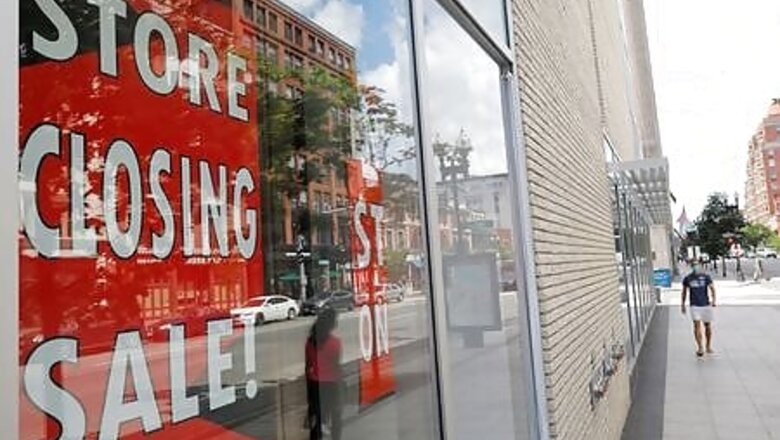
views
WASHINGTON U.S. employment growth slowed considerably in July amid a resurgence in new COVID-19 infections, offering the clearest evidence yet that the economy’s recovery from the recession caused by the pandemic was faltering.
The Labor Department’s closely watched employment report on Friday piles pressure on the White House and Congress to reach an agreement on another aid package. Talks have been dragging over differences on major issues including the size of a government benefit for tens of millions of unemployed workers.
A $600 weekly unemployment benefit supplement expired last Friday, while thousands of businesses have burned through loans offered by the government to help with wages.
“The jobs recovery is on very shaky ground and without seat belts for the unemployed provided by additional fiscal stimulus the economy could be in for a very bumpy ride,” said Chris Rupkey, chief economist at MUFG in New York. “There cannot be sustainable economic growth if the country has to carry on with the crushing weight of massive unemployment.”
Nonfarm payrolls increased by 1.763 million jobs last month after a record rise of 4.791 million in June. That left payrolls 12.9 million below their pre-pandemic level. Employment peaked at 152.5 million in February.
Economists polled by Reuters had forecast 1.6 million jobs were added in July. Many say July was probably the last month of employment gains related to the rehiring of workers after the reopening of businesses.
The slowing labor market is more bad news for President Donald Trump, who is lagging in opinion polls behind former Vice President Joe Biden, the presumptive Democratic Party nominee for the Nov. 3 election.
The economy, which entered into recession in February, suffered its biggest blow since the Great Depression in the second quarter, with gross domestic product dropping at its steepest pace in at least 73 years.
Infections of the respiratory illness soared across the country last month, forcing authorities in some of the worst-affected areas in the West and South to either shut down businesses again or pause reopenings, sending workers back home. Demand for goods and services has suffered.
Last month’s slowdown in job growth occurred across all sectors, with the exception of government. The leisure and hospitality industry hired 592,000 workers, accounting for about a third of nonfarm payrolls. The bulk of the jobs were at restaurants and bars. Retail employment rose by 258,000 jobs, with almost half of the gain in clothing and accessories stores.
Professional and business services added 170,000 jobs, concentrated in the temporary help services. Government employment increased by 301,000 in July, artificially boosted by hefty gains in state and local government education.
The model that the government uses to strip out seasonal fluctuations from the data normally anticipates education workers to drop off payrolls in July. This, however, happened earlier because of the pandemic, leading to a big gain in July.
U.S. stocks opened lower while the dollar rose against a basket of currencies. U.S. Treasury prices were trading largely higher.
MILLIONS UNEMPLOYED
The unemployment rate fell to 10.2% from 11.1% in June, but it has been biased downward by people misclassifying themselves as being “employed but absent from work.”
The Labor Department’s Bureau of Labor Statistics, which compiles the report, estimated that the jobless rate would have been 11.2% without this error. The BLS, however, cautioned that the 1 percentage point estimate “represents the upper bound of our estimate of misclassification and probably overstates the size of the misclassification error.”
At least 31.3 million people were receiving unemployment checks in mid-July. The slowdown in hiring challenges the U.S. stock market’s expectation of a V-shaped recovery. The S&P 500 index is up nearly 50% from its March trough. As COVID-19 cases spiral, and Republicans and Democrats bicker over another stimulus package, economists see a W-shaped recovery.
Economists estimate the Paycheck Protection Program that gave businesses loans that can be partially forgiven if used for employee pay saved around 1.3 million jobs at its peak. The extra $600 weekly unemployment checks made up 20% of personal income and helped to boost consumer spending in May and June.
Disclaimer: This post has been auto-published from an agency feed without any modifications to the text and has not been reviewed by an editor















Comments
0 comment